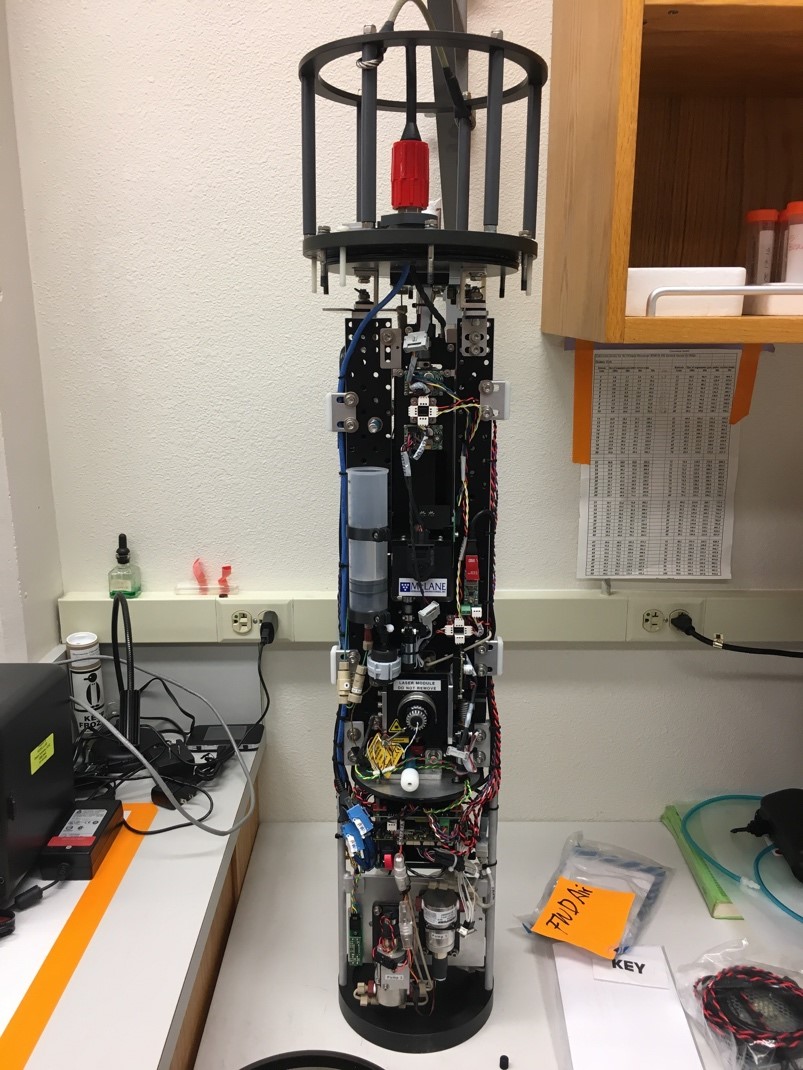Statewide HABs early-warning system being developed

SCCWRP and its partners have launched a two-year pilot study to develop a statewide early-warning system for coastal harmful algal blooms (HABs) that relies on autonomous microscopes to alert water-quality managers that a bloom event could be imminent.
The pilot network, which will be the first of its kind on the West Coast, marks the next phase of expansion for the statewide Harmful Algal Bloom Monitoring and Alert Program (HABMAP), which has been collecting coastal HABs data for more than a decade via weekly grab sampling at piers.
Technology advances in recent years have paved the way for automated, real-time HABs monitoring in coastal waters.
During the pilot, nine Imaging FlowCytobot (IFCB) units will be deployed off California piers and offshore moorings for several months at a time to capture hourly images of phytoplankton a few meters beneath the water’s surface.
The underwater images will then be transmitted via the web to computers on land that will use machine learning and image recognition software to estimate HABs levels in the water.
This continuous, real-time stream of HABs data has the potential to dramatically improve water-quality managers’ ability to predict when a bloom event is imminent.
More often than not, HABs are detected after the bloom already has occurred, limiting the effectiveness of management efforts to mitigate HABs’ impacts on fisheries and recreational activities.
Earlier detection also could give marine mammal rescue groups more advance notice to respond to animals sickened by HABs toxins and adaptively sample for toxins.
Meanwhile, researchers hope the additional HABs data at new timescales will help them better understand the specific environmental causes of HABs. Data from the pilot network will be fed into the California Harmful Algae Risk Mapping (C-HARM) system, which is being used to improve predictions of coastal HABs.
HABs, which result from the overgrowth of microscopic algae, or phytoplankton, are ecologically disruptive events that are becoming more frequent and more intense across California as waters warm. HABs are responsible for, among other things, contaminating shellfish with toxins, reducing fisheries yields, sickening marine mammals and triggering closures of recreational water bodies.
The IFCB units selected for the pilot study were first made commercially available in 2016 by manufacturer McLane Research Laboratories Inc. based in Massachusetts. In California, the underwater vehicles already have been piloted in the Santa Cruz Wharf and San Francisco Bay, as well as off the coasts of Orange and San Diego Counties.
The underwater units are being deployed at nine coastal California sites, from Trinidad in Humboldt County to San Diego. SCCWRP will help maintain the IFCB unit that will be deployed off Newport Pier in Orange County.
In one case study demonstrating the value of autonomous HABs monitoring, an IFCB unit that had been deployed on a mooring off Del Mar in spring 2020 captured the initiation of the bloom event that triggered bioluminescent ocean waves. Because of COVID-19 pandemic-related restrictions on HABs grab sampling, the IFCB provided was one of the only data sources forstudying this bloom.
All nine IFCB units are expected to be deployed by summer 2021.
For more information, contact Dr. Jayme Smith.
More news related to: Eutrophication, Harmful Algal Blooms, Top News